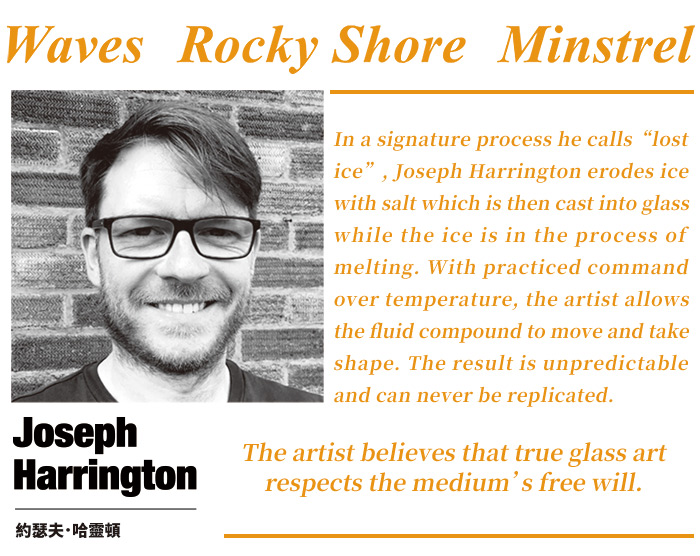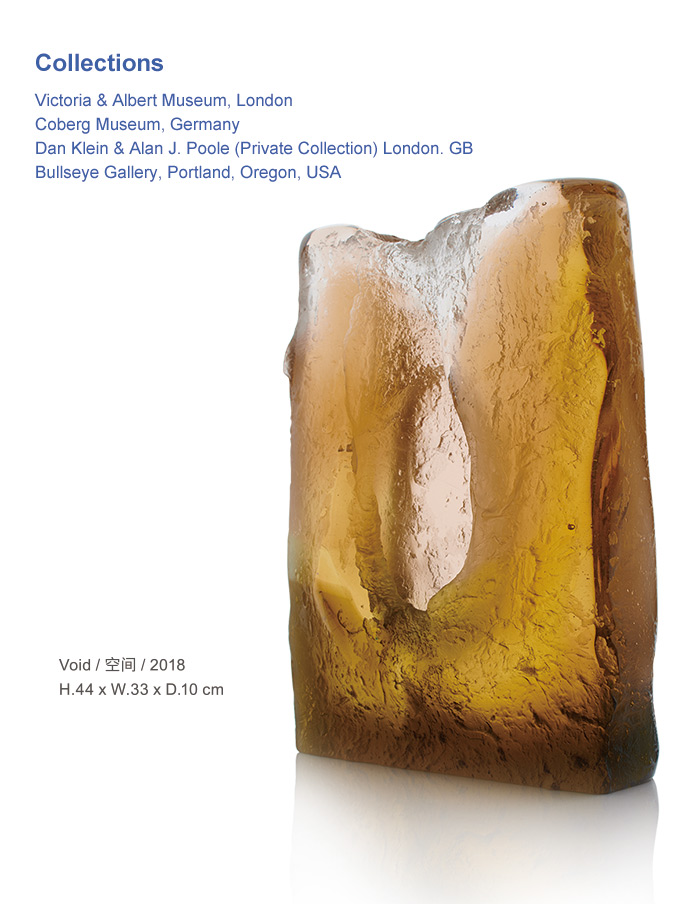-

-

-
Joseph Harrington, a studio assistant to Colin Reid from 2002–4, works in relation to the natural landscape, using salt to melt ice into sculptural form invoking coastal erosion and the abrasive interaction of sea and rock edges, of liquid and mineral states, as a constantly evolving material equation of time and space, of history and place. This he calls his ‘Lost Ice Process’:
I use salt to sculpt ice as a one-off ephemeral model to take a direct cast from. The textures this provides and the transient nature of the creative process reflects the erosion and sense of time I want to represent in the landscape. There is a roughness from the initial cast that is ground polished and refined to its final finish, revealing the internal structures of the glass and creating facets and flat planes to redefine the essence of the made against the organic surface.
As a form of representation, this work does not therefore describe the landscape. Rather, it works as it were at the cliff-edge of representation, employing physical and chemical processes to re-create the original inspiration for the work in the texture of disintegration through gradual erosion, in time. All that is solid melts into air, as someone once wrote somewhere.
Void (2018) and Gabbro iii (2018) are two such examples, showing at the Liuli China Museum. ‘Cast Glass, Lost ice Process, with salt erosion’ is their technical designation as pieces in which body colour and light itself appear similarly vulnerable to wear or attrition, their motion cast as arrested time.
-
